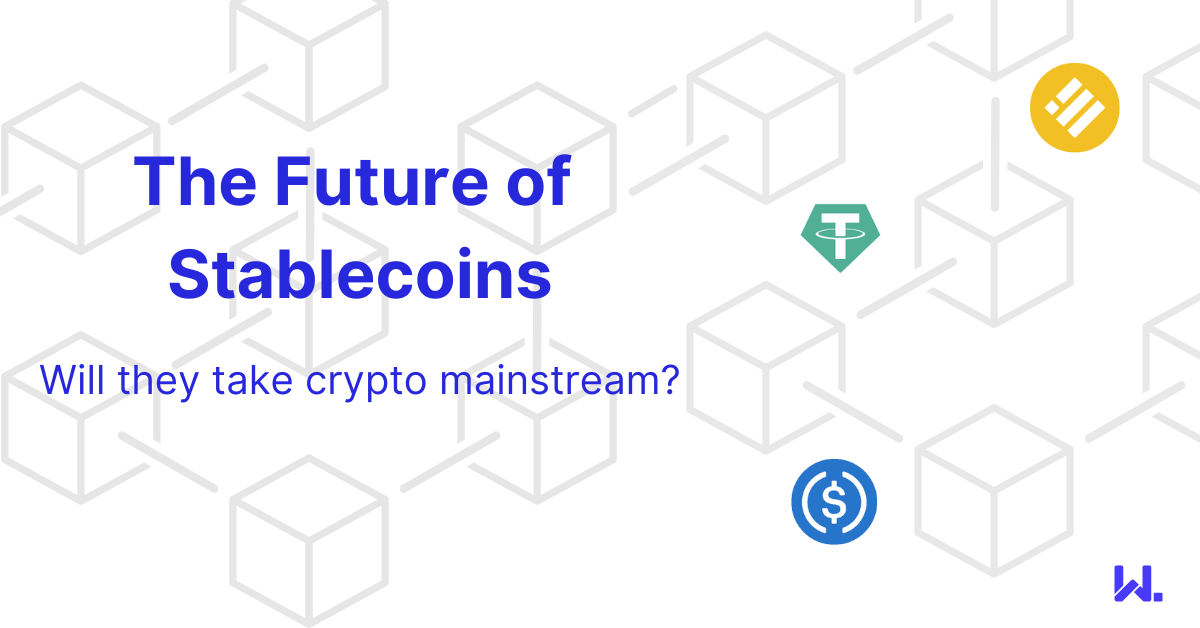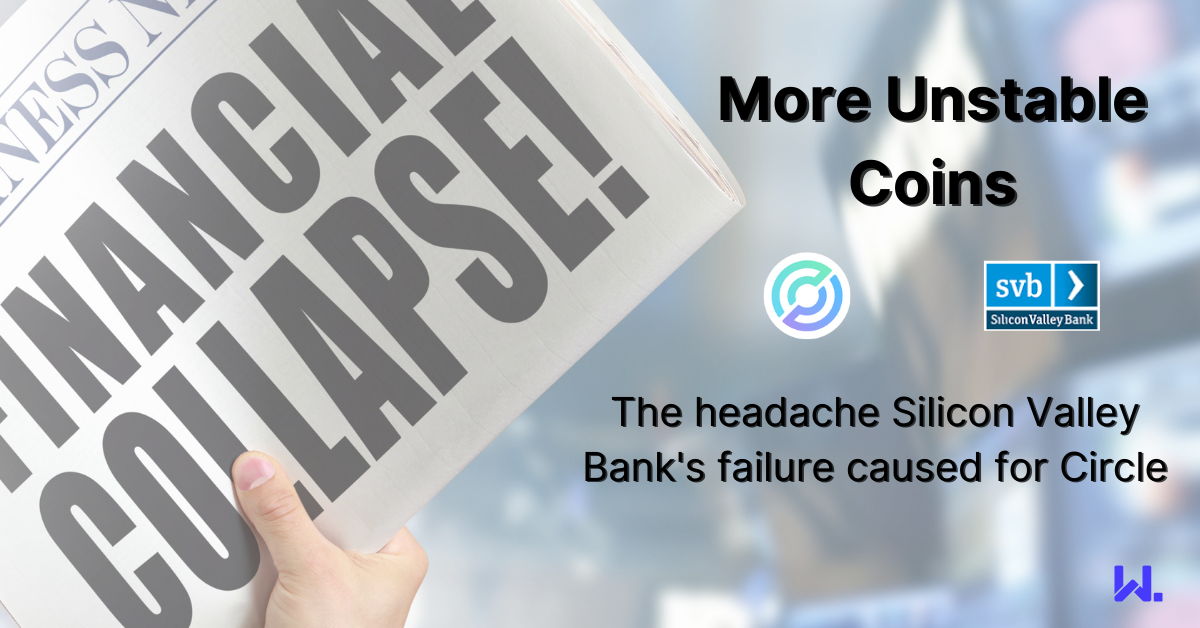Backdoor CBDCs
When is a CBDC not a CBDC? When it’s a backdoor CBDC according to a number of leading banks. Banks are now concerned about the USDC stablecoin becoming a “ backdoor ” CBDC.
Just in case you are wondering what a CBDC is, a central bank digital currency is a digital form of a nation's currency issued and controlled by its central bank. Unlike cryptocurrencies like Bitcoin, which are decentralized, CBDCs are centralized and typically tied to the country's existing monetary system.
What purpose do they serve?
- Financial inclusion: CBDCs aim to provide access to digital financial services for individuals who are currently underserved or excluded from the traditional banking system.
- Monetary policy tools: Central banks can use CBDCs to implement monetary policies more effectively by controlling the money supply, interest rates, and more.
- Payment system efficiency: CBDCs can enhance the efficiency of domestic and cross-border payment systems, reducing transaction costs and settlement times.
A backdoor CBDC unlike a synthetic CBDC is one where a stablecoin ends up being collateralised by reserves which are held by a central bank, but without having an account with the central bank.
Banks don't like USDC
This is achieved using an intermediary, which in Circle's case is Blackrock. Blackrock has a money market fund which they created specifically for managing some of the collateral (roughly two-thirds) they hold on behalf of Circle.
This collateral is invested in short-dated U.S treasuries earning a yield. However, what was highlighted by a recent Ledger Insights article was that money market funds are able to make use of something called the Federal Reserve's reverse repo facility (RRP). Funds using this RRP facility purchase treasuries directly from the Fed and can be resold back in the future for a gain. This is similar to depositing cash directly with the Fed, which is why it is effectively a backdoor CBDC, as the Fed would be holding funds which collateralise a stablecoin.
At this point in time, Blackrock has only applied for access to the facility for its Circle Reserve Fund. In addition, the RRP was meant to be a temporary facility when it was created back in 2013. However, the RRP rates have remained very attractive for money market funds compared with bank deposits and bonds, which has seen interest continue to balloon this past year. Which is why it appears unlikely to wind down any time soon.
The Bank Policy Institute who represent banks in the U.S. aren't fans of what is being proposed here. Their view is that if the Circle Reserve fund were able to get access to the RRP facility, all of a sudden, USDC holders have an asset that is collateralised by assets which have a significant allocation being held by the Fed. This would be great for users of USDC, as the Fed is effectively guaranteeing their funds. However, it's accurate to describe the result as USDC becoming effectively a "backdoor CBDC", which is what the traditional banks aren't fans of.
This backdoor approach circumvents much of the regulatory challenges faced by any companies that wish to establish CBDCs. Were the Fed to approve this approach for Blackrock it would raise questions about how worthwhile it is to jump through all of the regulatory red tape for other types of CBDCs.
Synthetic CBDCs
For instance, Fnality uses a synthetic CBDC for its payment system. A synthetic CBDC is one not issued by a central bank. Instead, the central bank creates a deposit account for an entity, that takes wholesale deposits from other regulated banks and then tokenises them. Fnality uses these tokenised deposits for its payment system. The Bank of England refers to this type of account as an omnibus account — it allows funds from multiple banks to be pooled together, providing them to make payments to one another, without the availability constraints of the RTGS system.
Creating a synthetic CBDC as Fnality has done, is far from trivial due to the sheer number of regulatory hurdles that have needed to be overcome. Our current financial regulation comes from a time preceding blockchains, as such one cannot understate the complexities involved with setting up a blockchain-based payment system in a manner that satisfies regulatory and central bank constraints.
It's unlikely that any larger central banks will be willing to embrace public blockchain networks anytime soon. Access to the wholesale financial markets is ring-fenced and tightly regulated due to their systematic importance. This is why the idea of backdoor CBDCs is so interesting.
USDC versus retail CBDCs
USDC is effectively a retail (crypto) currency — it is provided by a commercial entity (Circle), can be held on deposit on a crypto exchange or wallet, and used for purchases and payments. It is not currently backed by central bank funds. Contrasting this with retail CBDC — based on current approaches being trialled by the Bank for International Settlements, it seems likely that any retail CBDC is likely to be issued by commercial banks to consumers, rather than a central bank directly, think J.P. Morgan or Citi dollars that live on a public blockchain.
The bank-issued retail CBDCs will have balances with a central bank that correspond to the amount of the retail CBDC they have in circulation. Whether this vision of retail CBDCs comes to fruition remains to be seen, but a bank issuing its own stablecoins seems reasonable in the medium term. It will likely come down to regulation to dictate what funds are needed to carry out this activity.
If the corresponding funds need to be on account with a central bank, it will effectively be a retail CBDC. However, they may end up simply tokenising some of their existing deposits à la our existing fractional reserve banking system, except that the funds being lent are instead a bank-issued stablecoin.
With this in mind, regardless of whether stablecoins such as USDC or deposit-backed/retail CBDCs become the digital currency of choice for Web3, they are all likely to come with issuer risk. A regulated commercial bank is likely to have more hoops to jump through than Circle to issue a stablecoin, but should any issuer fail, retail holders will still be left holding the bag. This is where no doubt the regulators will spend a lot of time working out the most appropriate framework to cater for such scenarios. No doubt Circle is going to have more work to do on this front going forward. Yet, it would be surprising if the Circle Reserve Fund was able to access the Fed's RRP facility. It would be good for web3 and Circle, but bad for the banks.
However, considering what the potential end game looks like for retail digital currencies, it’s going to be impossible to eliminate issuer risk fully, but one would hope to see some sort of government guarantees such as those provided for funds in deposit accounts before we have any backdoor CBDCs.


